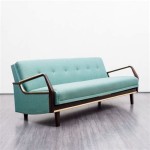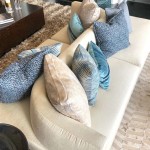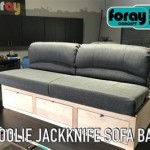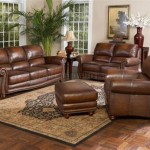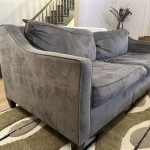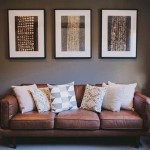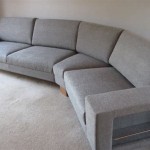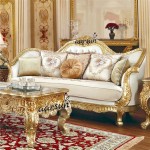Wooden Sofa Cushion Design: Latest Trends and Considerations
The wooden sofa, a staple in furniture design, offers a blend of durability, aesthetic appeal, and versatility. However, the comfort of a wooden sofa heavily relies on the quality and design of its cushions. The latest trends in wooden sofa cushion design focus on maximizing comfort, enhancing visual appeal, and integrating sustainable materials. This article explores these trends, providing a comprehensive overview of the key factors to consider when selecting cushions for a wooden sofa.
Wooden sofas present unique challenges for cushion design. Unlike upholstered sofas where the frame is concealed, the wooden frame is an integral part of the sofa's aesthetic. Therefore, the cushions must complement, rather than detract from, the wood's natural beauty. Furthermore, the firmness and support required for comfortable seating must be balanced with the visual lightness appropriate for a wooden frame. The latest design innovations address these challenges through material selection, construction techniques, and aesthetic considerations.
Material Innovation: Comfort and Sustainability
The choice of materials is paramount in determining the comfort and longevity of wooden sofa cushions. Recent trends emphasize the use of high-density foam, natural fibers, and sustainable fabrics. High-density foam provides excellent support and retains its shape over time, preventing the cushions from sagging. Natural fibers, such as cotton, linen, and wool, offer breathability and moisture-wicking properties, enhancing comfort in various climates. These materials also contribute to a more sustainable and eco-friendly design.
Sustainable fabric options are gaining considerable traction. Recycled polyester, made from plastic bottles, offers a durable and water-resistant alternative to traditional fabrics. Organic cotton, grown without harmful pesticides, provides a softer and more environmentally friendly option. Hemp and bamboo fabrics are also emerging as popular choices due to their rapid growth rate and minimal environmental impact. These sustainable materials not only reduce the ecological footprint of the sofa but also add a unique texture and visual appeal.
The internal filling of the cushions is equally important. Down feathers offer exceptional softness and warmth but require careful sourcing and ethical considerations. Synthetic down alternatives, such as polyester fiberfill, provide a cruelty-free and hypoallergenic option. Shredded memory foam offers excellent support and conforms to the body's contours, providing personalized comfort. The choice of filling depends on the desired level of softness, support, and environmental consciousness.
Construction Techniques: Enhancing Durability and Support
The construction of wooden sofa cushions significantly impacts their durability and support. Traditional techniques, such as hand-tufting and piped edges, enhance the visual appeal and structural integrity of the cushions. However, modern innovations, such as channel stitching and layered foam construction, offer improved performance and longevity. Channel stitching prevents the filling from shifting, ensuring even distribution of support across the cushion. Layered foam construction combines different densities of foam to provide optimal comfort and support.
Removable covers are a crucial feature for wooden sofa cushions. They allow for easy cleaning and maintenance, extending the lifespan of the cushions. Zipper closures are commonly used for removable covers, but hidden zippers or envelope closures offer a more seamless and elegant appearance. The fabric used for the covers should be durable, stain-resistant, and fade-resistant to withstand daily wear and tear. Performance fabrics, treated with stain-repellent coatings, offer enhanced protection against spills and stains.
The dimensions of the cushions are also critical. Cushions that are too large or too small can detract from the sofa's aesthetic and compromise comfort. The depth and width of the seat cushions should be proportional to the size of the sofa frame. Back cushions should provide adequate lumbar support and encourage proper posture. Consider the overall dimensions of the sofa and the intended use when determining the optimal cushion size. For example, a sofa designed for lounging may benefit from deeper seat cushions and softer back cushions.
Aesthetic Considerations: Blending Comfort and Style
The aesthetic design of wooden sofa cushions should complement both the wooden frame and the overall interior décor. Color, pattern, and texture play a significant role in creating a cohesive and visually appealing look. Neutral colors, such as beige, gray, and white, offer a versatile backdrop for a variety of decorating styles. Bold colors, such as navy blue, emerald green, and mustard yellow, can add a pop of personality and create a focal point in the room.
Patterns can add visual interest and depth to wooden sofa cushions. Geometric patterns, such as stripes, chevrons, and hexagons, create a modern and sophisticated look. Floral patterns, whether traditional or contemporary, add a touch of elegance and femininity. Abstract patterns offer a more artistic and unique design. When selecting patterns, consider the existing décor and choose patterns that complement the overall style of the room.
Texture is another important element in cushion design. Textured fabrics, such as velvet, corduroy, and boucle, add tactile appeal and visual depth. Combining different textures can create a more dynamic and interesting look. For example, pairing smooth linen cushions with textured velvet throw pillows can add a layer of sophistication. The choice of texture depends on the desired level of formality and the overall aesthetic of the space.
The shape and arrangement of the cushions can also impact the overall aesthetic. Square cushions offer a classic and symmetrical look, while rectangular cushions provide a more modern and streamlined appearance. Round cushions can add a touch of softness and whimsy. Arranging the cushions in a balanced and intentional manner is crucial for creating a visually appealing and comfortable seating area. Consider layering different sizes and shapes to create depth and visual interest.
Furthermore, integrating the cushions seamlessly with the wooden frame is key. This can be achieved through careful selection of colors and textures that either complement or contrast with the wood's natural tones. For instance, cushions in earthy tones such as browns, greens, and oranges can beautifully complement a wooden frame with warm undertones. Conversely, cushions in cooler tones like blues and grays can provide a striking contrast against a wooden frame with reddish or darker hues.
Detailed design features, such as button tufting, stitching patterns, and decorative piping, can also elevate the aesthetic appeal of the cushions. Button tufting, a classic technique, adds a touch of elegance and sophistication, while unique stitching patterns can create a modern and contemporary look. Decorative piping, available in various colors and materials, can define the edges of the cushions and provide a polished finish. These details can be customized to match the style of the sofa and the overall décor of the room.
Accessorizing the wooden sofa with throw pillows and blankets can further enhance its comfort and visual appeal. Throw pillows provide extra support and comfort, while blankets add warmth and texture. Choose throw pillows and blankets that complement the cushions and the overall aesthetic of the room. Coordinating the colors, patterns, and textures of these accessories can create a cohesive and inviting seating area.
Lighting also plays a significant role in showcasing the beauty of wooden sofa cushions. Natural light can enhance the colors and textures of the cushions, while ambient lighting can create a warm and inviting atmosphere. Consider the placement of the sofa in relation to natural light sources and choose lighting fixtures that complement the overall design of the room. Accent lighting can be used to highlight specific features of the cushions, such as decorative stitching or textured fabrics.
In conclusion, the design of wooden sofa cushions involves a complex interplay of material selection, construction techniques, and aesthetic considerations. By carefully considering these factors, it is possible to create cushions that are not only comfortable and durable but also enhance the overall beauty and functionality of the wooden sofa. The latest trends in cushion design emphasize sustainability, comfort, and visual appeal, offering a wide range of options for creating a stylish and inviting seating area.

Solid Wood Sofa Cushion Cover

Cushion For Wooden Sofa Set Top

Wooden Sofa Decor Ideas Designs Modern

Wooden Sofa Set Design Ideas Modern Wood Modular

Sofa Set Buy Stylish Wooden Designs For Living Room Furniture Every Home Sunrise International

Buy Wooden Sofas Upto 70 Off With Classic Style Royaloak

Traditional Wooden Sofa Set Kuber Furniture

Solid Wood Sofa With Cushion

Create A Bohemian Oasis With Our Cane Boho Sofa Set For Living Room And Garden

Wooden Sofa With Cushion 5 Seaters Teak Wood

